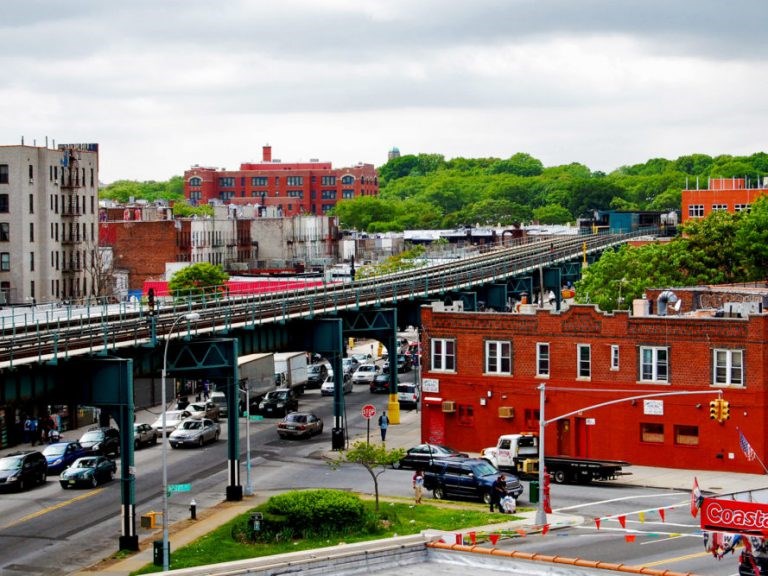A new interactive report from the Institute for Children, Poverty, and Homelessness (ICPH) reveals that the community of Brownsville having one of the highest shelter entry rates of all neighborhoods in Brooklyn and New York City.
The report, The Dynamics of Family Homelessness in Brownsville, explores how deeply entrenched socio-economic factors such as high levels of poverty and unemployment, insufficient and unaffordable housing, and high rates of domestic violence and incarceration can result in high rates of homelessness.
With all of these factors in mind, Brownsville has been most remarkably impacted, with high rates of concentrated poverty for decades-- more than two in five (43 percent) residents living in poverty, 28 percent of whom are children.
"Poverty and a lack of economic opportunity can create a web of destabilizing factors that threaten a family's ability to maintain permanent housing," said Chloe Stein, principal policy analyst at ICPH.
"The community of Brownsville offers an example of how the shelter system, family, and neighborhood dynamics intertwine to make families vulnerable to housing instability."
Findings About Brownsville
- Families in Brownsville entered shelter at more than two times the rate of Brooklyn and New York City (8.5, 3.6, and 3.8 per 1,000 households, respectively).
- Student homelessness in Brownsville saw a 31% increase since SY 2011—12, with nearly one in five Brownsville students experiencing homelessness in SY 2016—17. This was twice the rate of homeless students in Brooklyn (9%) and NYC (10%).
- Brownsville was the second-most severely rent-burdened neighborhood in Brooklyn and the fourth-most in NYC in 2017, with close to two in five households spending 50% or more of their income on rent.
- There are more family shelter units (720 units) than there are families becoming homeless in Brownsville, which has the 3rd-highest family shelter capacity in New York City.
"It is essential that the well-being of families facing homelessness is prioritized," says Andrea Pizano, Chief of Policy Research. "Homelessness can have far-reaching, intergenerational consequences for adults, children, and communities, so every effort must be made to prevent homelessness and provide the necessary supports to those families already experiencing the loss of a home."
The positive news is, Brownsville is at the forefront of neighborhood revitalization efforts, creating youth training opportunities, developing public space, and investing in the community in a variety of ways.
In addition, the City has implemented affordable housing, anti-violence, and early education initiatives.
 Community Board 16, representing Brownsville, on Wednesday, February 19, 2020 from 6:00 p.m. to 8:00 p.m. at 444 Thomas S. Boyland Street will hold its semi-annual update on The Brownsville Plan and its progress to date.
Community Board 16, representing Brownsville, on Wednesday, February 19, 2020 from 6:00 p.m. to 8:00 p.m. at 444 Thomas S. Boyland Street will hold its semi-annual update on The Brownsville Plan and its progress to date.
All Brownsville residents, community partners and supporters are invited to discuss the goals and projects included in the plan and moving forward. For more information on the plan, please visit www.nyc.gov/brownsville.




